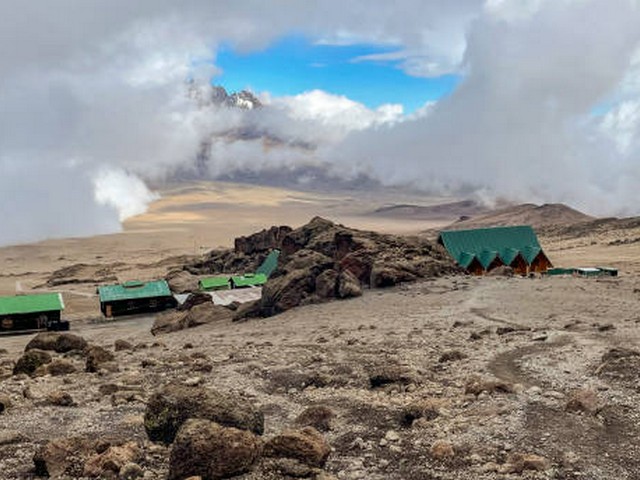How To Reduce Your Carbon Footprint On Kilimanjaro Treks
Standing majestically as Africa’s highest peak, Mount Kilimanjaro is not just a mountain; it’s a symbol of nature’s vast, untouched beauty. As trekkers and adventurers from around the world aim to conquer its heights, the rise in foot traffic brings a significant challenge- maintaining the ecological sanctity of this pristine environment. At the Kilimanjaro Centre for Trekking and Ecotourism (KCTE), we believe that it is possible to enjoy the thrill of the climb while also preserving the mountain for future generations. In this blog, we’ll explore practical, impactful ways you can reduce your carbon footprint during your Kilimanjaro treks. Ready to be a responsible trekker? Let’s embark on this green journey together!
Eco-Conscious Trekking: The Path Less Travelled
Choose the Right Tour Operator
The first step in ensuring an eco-friendly trek is selecting a responsible tour operator. At KCTE, sustainability is at the heart of everything we do. From employing local guides and staff to using renewable energy sources at our camps, we are committed to reducing environmental impact. By choosing operators who prioritize eco-friendly practices, you contribute directly to conservation efforts and community welfare.
Travel Light
Every kilogram counts when you’re climbing Kilimanjaro. Lighter packs mean less energy consumption, both human and vehicular, reducing the overall carbon emissions associated with your trek. Pack only the essentials, focusing on multi-use items and leaving behind one-time-use products that contribute to waste.
Embrace Renewable Energy
Using renewable energy sources can significantly cut down the carbon footprint of your trek. Consider solar-powered chargers for your electronic devices and opt for accommodations that use solar panels or other green energy sources. This small shift from conventional power sources reduces reliance on fossil fuels and promotes a cleaner environment.
Sustainable Waste Management
Proper disposal and management of waste are crucial in preserving Kilimanjaro’s ecosystems. Always carry back non-biodegradable waste, such as plastic bottles and packaging, and dispose of them properly after descending the mountain. KCTE promotes the use of biodegradable products and offers facilities for trekkers to segregate and manage their waste effectively during the trek.
Opt for Local & Organic
Supporting local markets not only boosts the local economy but also cuts down on emissions from transporting food supplies from far off. We encourage our trekkers to consume local, organic foods that are grown around the region, which are not only fresher but also less taxing on the environment.
Carbon Offsetting
Consider investing in carbon offset programs that contribute to environmental projects, such as reforestation or renewable energy installations. These programs compensate for the emissions you cannot eliminate and are a proactive step towards global climate health.
The Ripple Effect of Green Trekking
Educate and Influence
As you embark on your eco-friendly journey up Kilimanjaro, share your experiences and knowledge with fellow trekkers. Education is a powerful tool in the fight against climate change. By discussing the measures you are taking to reduce your footprint, you inspire others to adopt similar practices.
Continuous Improvement
Eco-friendly trekking isn’t just a one-time effort; it’s a continuous commitment to improving your environmental practices with every trek. KCTE is dedicated to ongoing research and implementation of sustainable technologies and methods in all our treks, ensuring we are always at the forefront of eco-tourism.
FAQs: Treading Lightly on Kilimanjaro
Q: How can choosing a responsible tour operator make a difference?
A: Responsible tour operators implement sustainable practices in every aspect of their operations, from waste management to energy use and staff training. This ensures that your trek is environmentally friendly and supports local communities.
Q: Why is it important to travel light?
A: Travelling light reduces the carbon emissions associated with transporting heavier loads on the mountain, and lessens the wear and tear on local paths and trails.
Q: Can I really make a difference by eating local foods?
A: Absolutely! Local foods require less transportation and are generally grown using methods that are better for the soil and local ecosystems. They also help support the economies of local communities surrounding Kilimanjaro.
Ready to Make a Difference?
Climbing Kilimanjaro is a life-changing experience, and doing it in a way that respects and preserves its natural beauty makes the adventure even more rewarding. At Kilimanjaro Centre for Trekking and Ecotourism (KCTE), we are committed to providing you with an unforgettable, eco-friendly trekking experience.
Reduce your carbon footprint and become a part of the global effort to protect our planet. Book your Kilimanjaro climbing adventure with KCTE today and take the first step towards a greener, more sustainable world. Together, let’s keep the roof of Africa majestic and unspoiled for generations to come!




